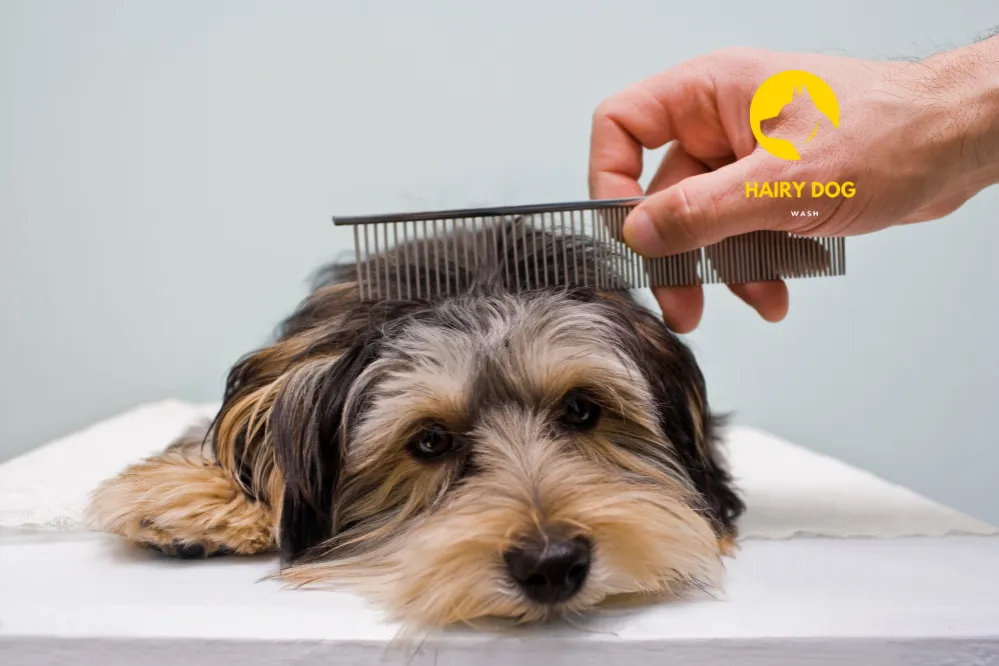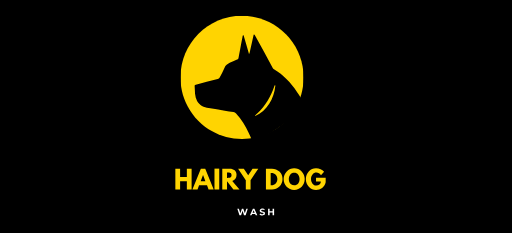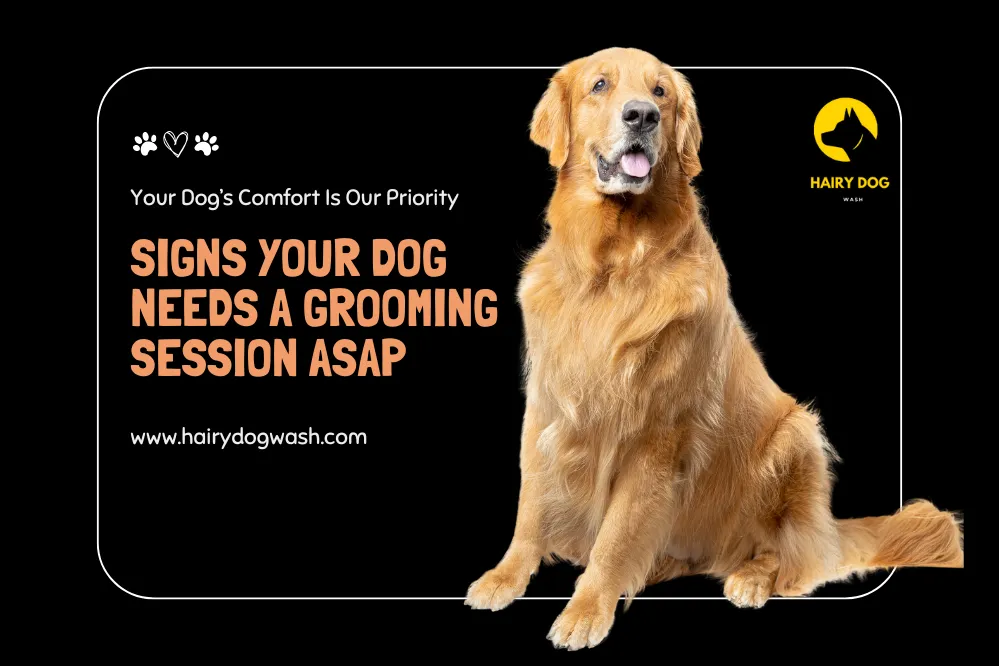Keeping your dog clean is not just about looks. Grooming is a big part of your dog’s health. Just like humans, dogs also need regular care to stay fresh, happy, and healthy. Many pet owners think that grooming is only for long-haired dogs or show dogs. But the truth is, every dog needs grooming.
Skipping grooming can lead to serious health problems. It can cause skin issues, infections, and even behavior changes. So how do you know when your dog needs a grooming session right away? In this blog, we’ll talk about the clear signs that it’s time for a visit to the groomer or a good grooming session at home. What to Expect During The First Dog Grooming Appointment, read the full blog.
Let’s get started.
1. Strong or Unusual Odor

Dogs naturally have a slight scent. But if your dog starts to smell bad, it may be a sign of something wrong. A strong odor can come from dirty fur, oily skin, or even an infection. Smells coming from the ears, mouth, or paws are not normal. They need to be checked right away.
If your dog still smells after a bath, it might mean something deeper, like a skin condition. Regular grooming helps catch these issues early.
2. Matted or Tangled Fur
Mats are clumps of fur that twist and tangle. They often form around the legs, neck, and behind the ears. They can be painful and pull on your dog’s skin. Mats can hide wounds, ticks, or skin infections.
If your dog’s fur feels rough or hard to brush through, grooming is overdue. Brushing regularly helps prevent mats. But once they form, they need to be removed carefully. A Day in the Life of a Dog Groomer at Hairy Dog Wash, read the full blog.
3. Excessive Scratching or Biting

If your dog is always scratching, licking, or biting its skin, it could mean something’s wrong. It may be fleas, dry skin, allergies, or a skin infection. Dirt and oils can build up in the fur and cause discomfort.
Grooming removes dirt, dead skin, and parasites. It also helps your groomer spot problems early. If the itching continues after grooming, you should talk to a vet.
4. Dirty Ears
Your dog’s ears should be clean and free from bad smells. If you notice a dark waxy buildup, redness, or a bad odor, it could be a sign of an ear infection. Dogs with floppy ears are more prone to ear problems.
Regular ear cleaning is part of a full grooming routine. It helps prevent infections and keeps your dog comfortable. If your dog is shaking its head a lot, it might be because the ears are bothering them.
5. Overgrown Nails
Long nails are more than just a grooming issue. They can hurt your dog and affect how they walk. If your dog’s nails click on the floor or curve inward, they are too long.
Overgrown nails can break or split, causing pain and bleeding. Some dogs hate nail trims, but they are necessary. A groomer can trim nails safely and make the process easier.
6. Tear Stains or Dirty Face

Many small breeds get tear stains under their eyes. These dark marks look messy and can cause skin irritation. Food, dirt, and saliva can also build up around the mouth.
If your dog’s face looks dirty or smells, it’s time for a wash. A gentle cleaning around the eyes, mouth, and ears should be part of regular grooming.
7. Shedding More Than Usual
All dogs shed. But if your dog is shedding more than normal, it may mean their coat needs attention. Loose hair can cause knots, mats, and itchiness. It can also lead to hairballs in some cases.
Brushing helps remove loose fur and keeps the coat healthy. A good grooming session reduces shedding and keeps your home cleaner too.
8. Dull or Greasy Coat
A healthy coat should be shiny and soft. If your dog’s fur looks dull, greasy, or dry, something is off. It might be from a poor diet, lack of grooming, or a health problem.
Bathing with the right shampoo and regular brushing helps keep the coat in top condition. If the dullness doesn’t go away, you may need to adjust your dog’s food or check with a vet.
9. Bad Breath
Your dog’s breath won’t smell like mint, but it shouldn’t be awful. Bad breath can be a sign of dental problems. Tartar, gum disease, or infections can all lead to bad odor.
Brushing your dog’s teeth and regular dental care are part of grooming. Some groomers also offer teeth cleaning services. A dog with clean teeth lives a longer and healthier life.
10. Changes in Behavior
Is your dog more restless than usual? Avoiding play? Snapping when touched? These could be signs that something hurts. Mats, skin infections, or overgrown nails can all cause pain.
If your dog acts out or avoids being touched, check for physical issues. Grooming can solve many of these problems or help detect them early.
11. Dandruff or Flaky Skin
White flakes on your dog’s coat can be a sign of dry skin. It may come from weather changes, poor diet, or lack of grooming. Flaky skin can also mean a skin infection.
Regular brushing helps spread natural oils and reduce dryness. Using the right shampoo also helps. If flakes don’t go away after grooming, visit a vet.
12. Paw Pads and Fur Around Them
The fur between your dog’s paw pads can get dirty, matted, or packed with debris. This can be painful and affect walking. You may also notice your dog licking or chewing its paws often.
Grooming includes trimming the fur around the paws and checking for cuts, cracks, or stuck objects. Clean, trimmed paws are more comfortable and safer for your pet.
13. Signs of Parasites
Fleas, ticks, and mites love hiding in thick fur. If your dog is scratching constantly, has scabs, or you see little black specks (flea dirt), they may have parasites.
Grooming helps catch these early. It also removes eggs and keeps the coat clean. A professional groomer may alert you to hidden issues you haven’t seen.
14. Irregular Bowel Area
Check the fur around your dog’s backside. If it’s dirty, matted, or smells, it needs cleaning. Dried feces can stick to fur and cause discomfort or infection.
Long-haired dogs are more at risk for this problem. Groomers clean and trim around this area to keep it hygienic. This reduces the risk of irritation or infection.
15. Greasy or Wet Feeling
If your dog’s fur feels greasy, sticky, or wet for no reason, it’s time for a bath. Sebum buildup can make the coat feel oily. This often leads to odor and skin issues.
Regular baths with a gentle shampoo wash away dirt, oil, and bacteria. Dogs with oily coats may need grooming more often than others.
Why Grooming Should Never Be Delayed
Delaying grooming can lead to serious problems. What starts as a minor issue can turn into infection, pain, or stress for your dog. Grooming is more than skin deep. It affects your dog’s mood, energy, and well-being.
If grooming is hard for you to do at home, find a trusted groomer. They know how to handle all coat types, skin issues, and difficult dogs.
How Often Should You Groom Your Dog?
The answer depends on your dog’s breed, coat type, and activity level. Here’s a general guide:
- Short-haired breeds: Brush weekly, bathe every 4-6 weeks
- Long-haired breeds: Brush 3-4 times a week, bathe every 3-4 weeks
- Double-coated breeds: Brush during shedding season, bathe as needed
- Dogs with skin issues: Follow vet-approved grooming schedules
Puppies and older dogs may need special care. Always use dog-friendly products and be gentle.
Final Thoughts
Grooming is not just for looks. It’s for your dog’s health, comfort, and happiness. Many problems can be avoided with simple grooming routines. Pay attention to signs like odor, itching, dull fur, or dirty ears.
When in doubt, it’s better to groom a little too often than not enough. Your dog will feel better, act happier, and stay healthier in the long run.
So, don’t wait. If your dog is showing any of these signs, it’s time for a grooming session—ASAP

